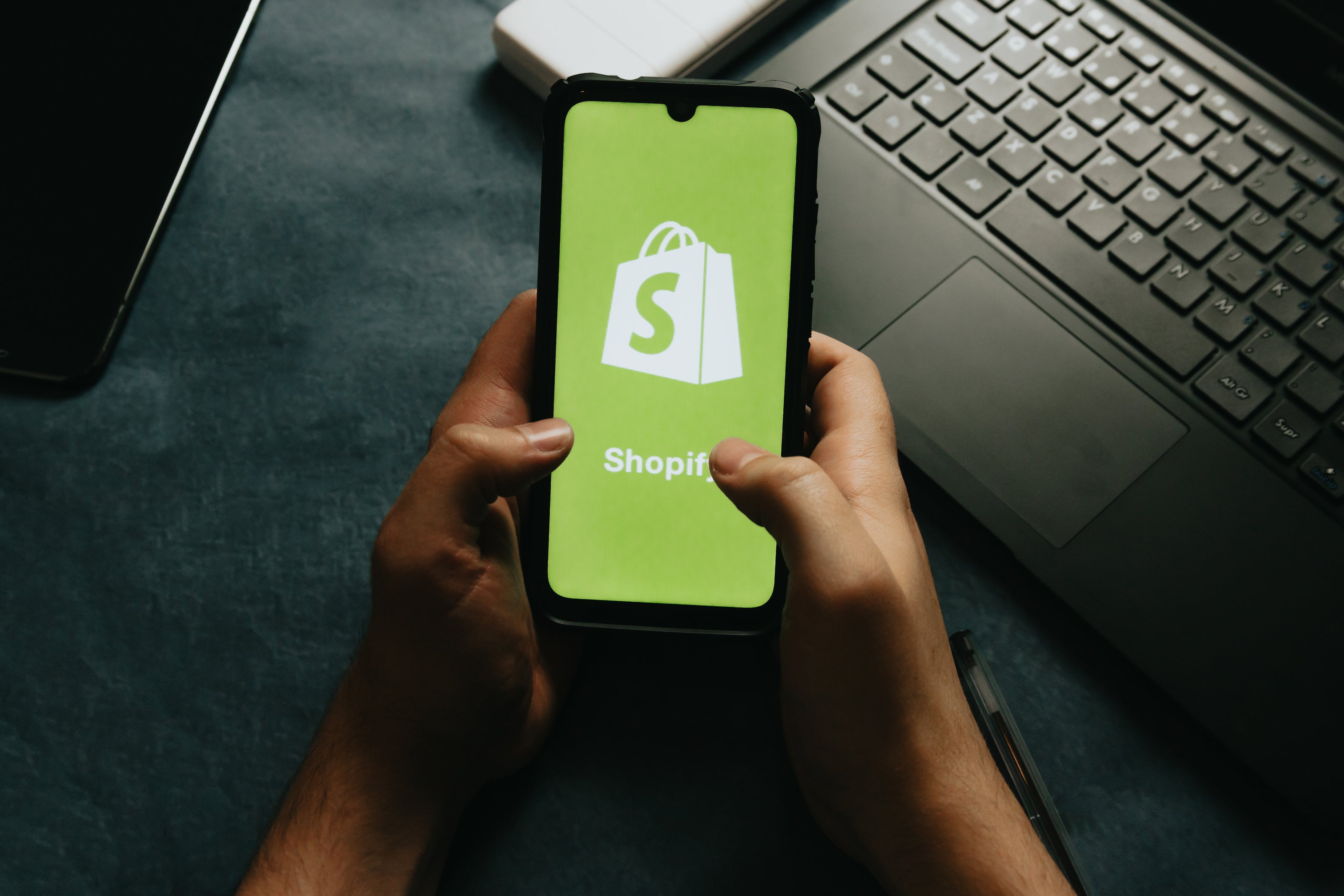
Top Ecommerce Business Ideas To Start in 2025
Share
Get your Ecommerce Start Up moving in 2025
Are you considering starting an ecommerce business? This article will present a variety of ecommerce business ideas to inspire your entrepreneurial journey. From niche online stores to subscription box services, you’ll find actionable ideas to kickstart your online venture .I have started and grown a high 6 figure Amazon FBA business, a print on demand business selling on Etsy, Society 6, Redbubble and many more, I have a Shopify store and also know many 7-8 figure e-commerce sellers so though I’d put the main points in this article - so let’s dive in!
Key Takeaways
- Niche online stores focusing on eco-friendly products, pet supplies and handmade crafts are promising eCommerce business ideas for 2025.
- Subscription box services are popular for their convenience, with options ranging from beauty products to hobby kits, helping to build customer loyalty.
- Print on demand and dropshipping models offer flexibility and low startup costs, allowing entrepreneurs to sell custom and trendy products without inventory management.
Niche Online Stores

Starting an ecommerce business by focusing on a niche market can be incredibly rewarding. Targeting a specific audience allows you to tailor products and marketing strategies to meet their unique needs, enhancing your ability to start an ecommerce business and stand out in a crowded marketplace.
Thorough market research identifies pain points and opportunities within your niche. Understanding target customers and their preferences refines product offerings and builds a strong, memorable brand.
Eco-Friendly Products
The demand for eco-friendly products is on the rise as consumers become more environmentally conscious. An eCommerce store focused on sustainable, reusable items can attract a dedicated customer base. Popular categories include reusable bags, bamboo toothbrushes and eco-friendly household products.
Businesses sell products that align with customers’ values and contribute to a greener planet, creating a successful ecommerce business through an ecommerce website, just like other businesses.
Pet Supplies
The pet supplies market is thriving, offering numerous opportunities for eCommerce entrepreneurs. From gourmet pet food to custom pet accessories, there are endless possibilities to cater to pet owners’ needs. Specificity in product offerings can provide a competitive edge, making it easier to attract and retain customers.
The growing trend of pet fashion means unique and stylish items can further boost your online store appeal.
Handmade Crafts
Handmade crafts have a special charm that mass-produced items can’t match. Selling your own handmade crafts offers greater control over quality and design, making your eCommerce business unique.
Platforms like Amazon Handmade offer opportunities to reach a wider audience and showcase your artisanal creations in an online marketplace. Whether it’s jewelry, home decor, or personalized gifts, handmade crafts can captivate customers looking for something special.
Subscription Box Services

Subscription box services have become a popular eCommerce model, offering convenience and novelty to customers. Delivering curated products regularly creates a stable income stream and fosters customer loyalty.
From beauty and skincare to food and beverages, subscription boxes can cater to various interests and preferences, making them a versatile and profitable online business idea.
Beauty and Skincare Boxes
Beauty and skincare subscription boxes are gaining popularity by offering a convenient way for consumers to discover new products. These boxes often include a mix of sample and full-size items, tailored to individual preferences.
Personalized samples boost customer satisfaction, increasing the likelihood of subscription continuation and recommendations.
Food and Beverage Subscriptions
Food and beverage subscription boxes appeal to culinary enthusiasts looking to explore new flavors and gourmet experiences. Often focusing on unique and artisanal items, these services provide a diverse and exciting culinary journey for subscribers.
Curated selections from various cuisines can attract adventurous eaters and create a loyal customer base.
Hobby and Craft Kits
Hobby and craft subscription boxes are perfect for creative individuals looking to engage in regular projects. These boxes deliver curated materials and instructions for various activities like knitting, painting and DIY projects.
These kits ensure recurring revenue and customer loyalty by keeping subscribers engaged and excited about new projects.
Print on Demand

Print on demand is a flexible eCommerce model that allows businesses to sell customized products without holding inventory. Products are printed and shipped only after a customer places an order, eliminating the need for upfront investment in stock.
This model is ideal for creating personalized items like apparel, home decor and accessories, catering to individual tastes and preferences.
Custom Apparel
Custom apparel is a popular segment in the print on demand market, offering items like T-shirts, hoodies and more with unique designs. Successful sellers typically offer a range of sizes to cater to diverse customer needs, making it easier to attract a broad audience.
This approach allows you to create a niche within the fashion industry, providing personalized clothing options that stand out.
Home Decor
Personalized home decor items, such as wall art and pillows, are in high demand as customers seek unique touches for their living spaces. This segment captures a significant portion of the print on demand market, reflecting the growing trend in personalized interior design.
Offering simple color options can simplify customer choices and boost sales.
Accessories
Custom accessories like tote bags and phone cases allow customers to express their individuality through unique designs. Utilizing print on demand services for these items eliminates the need for inventory, making it easier for entrepreneurs to offer a wide range of products without high upfront costs and shipping costs.
This approach caters to fashion-forward consumers looking for personalized and trendy accessories.
Dropshipping Business

Dropshipping is an attractive eCommerce business model where a third-party supplier ships products directly to customers, reducing startup costs and eliminating the need for inventory management. This flexibility allows entrepreneurs to focus on marketing and customer service while offering a wide range of products.
From electronics to fashion, dropshipping can cater to various niches, making it a versatile and profitable online business idea.
Electronics and Gadgets
The electronics and gadgets market is rapidly evolving, providing numerous opportunities for dropshipping businesses. Specializing in trendy and innovative products attracts tech-savvy consumers without the burden of inventory management. This approach allows for a flexible product range, catering to the ever-changing demands of the technology market.
Fashion and Accessories
Fashion and accessories are ideal for dropshipping, allowing businesses to offer customized and trendy items without holding stock. Leveraging print on demand services allows entrepreneurs to sell personalized products like apparel and jewelry, catering to fashion-forward consumers. This strategy enables businesses to stay ahead of trends and offer unique items that resonate with their target market.
Health and Wellness Products
The health and wellness sector is booming, with a growing demand for products that promote self-care and well-being. Dropshipping health and wellness items like skincare products, supplements and fitness gadgets can be highly lucrative. Success in this niche hinges on identifying reliable suppliers and staying informed about emerging trends.
Digital Products

Digital products offer a high-profit margin and minimal production costs, making them an attractive option for eCommerce businesses. These products can be sold multiple times without the need for inventory management, providing a scalable business model.
Digital products like eBooks and online courses cater to various interests and reach a global audience.
eBooks and Guides
eBooks and guides are popular digital products that provide valuable information on various topics. They can be created in different formats, such as PDF or ePub, catering to different reading preferences and allowing for easy distribution across multiple platforms.
eBooks on popular subjects like self-improvement and finance attract a wide audience and establish marketplace authority.
Online Courses
Online courses are a great way to share knowledge and skills with a global audience. Courses structured with multimedia elements like videos, quizzes and interactive assignments enhance the learning experience.
Platforms that support multimedia content make it easier to create and distribute online courses, reaching a diverse group of learners.
Software and Apps
The market for software and apps is vast, offering opportunities for entrepreneurs to develop and sell digital solutions. These products benefit from low production costs and instant delivery capabilities, making them a cost-effective alternative to traditional goods. Addressing specific needs and providing valuable tools helps software and apps attract a loyal customer base.
Private Label Products
Private label products allow businesses to create their own branded items without handling production directly. Partnering with manufacturers enables entrepreneurs to maintain control over branding and product quality in a business to business context.
This approach is ideal for building a unique brand identity and achieving higher profit margins.
Skincare and Beauty Products
The skincare and beauty market is expected to reach $756 billion by 2026, making it a lucrative area for private label businesses. Identifying a specific target market and collaborating with influencers can enhance brand visibility and customer engagement.
Meeting regulatory standards and building a strong brand identity are crucial for success in this market.
Fitness Equipment
Launching a private label fitness equipment line allows sellers to focus on specialized marketing strategies that target fitness enthusiasts. By offering unique and high-quality products, businesses can attract a dedicated customer base interested in health and fitness.
Kitchenware
Private label kitchenware offers opportunities to differentiate products through unique designs and functionalities. By targeting home cooks and offering items like utensils and cookware, businesses can capture the attention of consumers looking for innovative and stylish kitchen products.
Effective marketing strategies help businesses stand out in this competitive market by enhancing their overall search engine optimization business strategy.
Social Media Influencer Store
Social media influencers have a unique advantage in the eCommerce space, leveraging their personal connections with followers to boost sales. Integrating product sales directly into profiles allows influencers to offer a seamless shopping experience and effectively engage their audience.
From branded merchandise to affiliate marketing, influencer stores can generate significant revenue while maintaining authenticity and trust.
Branded Merchandise
Branded merchandise allows social media influencers to capitalize on their personal brand by offering custom apparel, accessories and home decor items. By sourcing and selling private label products, influencers can create a unique identity and achieve higher profit margins.
Collaborations with other brands or creators for exclusive products generate buzz and expand reach.
Affiliate Marketing
Affiliate marketing is an effective strategy for social media influencers to promote products and earn commissions. Integrating affiliate products into content allows influencers to provide genuine recommendations to their followers.
This approach leverages the trust and engagement built with their audience, making it a profitable online business model.
Exclusive Collaborations
Exclusive collaborations between influencers and brands can create unique product offerings that resonate with followers. These collaborations generate excitement and can significantly expand an influencer’s audience.
Affiliate marketing within these collaborations promotes exclusive products while earning commissions on sales.
Summary
The eCommerce landscape in 2025 is brimming with opportunities for entrepreneurs willing to explore various business models. From niche online stores to subscription boxes, print on demand, dropshipping, digital products, private label items and social media influencer stores, each avenue offers unique advantages and potential for success. By understanding your target market, leveraging the right strategies and staying passionate about your niche, you can build a thriving eCommerce business. Now is the time to take the leap and start your journey in the dynamic world of online commerce.
Further Reading on the Amazon KDP Business Model
Low Content Vs High Content Books?
Create and Sell Your First Amazon KDP Coloring Book
Further Reading on the Dropshipping Business Model
Dropshipping Mistakes and How to Avoid them
Oberlo Vs DSers for Dropshipping
Best Shopify Themes for Dropshipping
Essential Shopify Apps for your Dropshipping Store
Further Reading - Comparing Dropshipping to other eCommerce Models:
Shopify vs Amazon Dropshipping
Dropshipping Vs Print on Demand
Frequently Asked Questions
What are the 4 types of e commerce?
The four types of e-commerce are Business-to-Business (B2B), Business-to-Consumer (B2C), Consumer-to-Consumer (C2C) and Consumer-to-Business (C2B). Understanding these models can help you navigate the digital marketplace effectively.
What is the best eCommerce business to start in 2025?
Starting a niche online store or a subscription box service in 2025 could be a great move, especially if they align with your interests and market trends. Focus on unique products and effective marketing to stand out!
How do I choose a niche for my online store?
Choosing a niche for your online store comes down to understanding market needs and your own interests. Focus on what excites you and what your potential customers are looking for and you'll be on the right track to building a successful brand.
What are the benefits of subscription box services?
Subscription box services offer convenience and excitement by delivering curated products regularly, keeping you engaged and satisfied. Plus, they help build customer loyalty, making them a win-win!
Why is print on demand a good business model?
Print on demand is a great business model because it cuts down on inventory costs and risks while letting you customize products to fit customer preferences. This flexibility can lead to a more engaged customer base and increased sales.











































































































